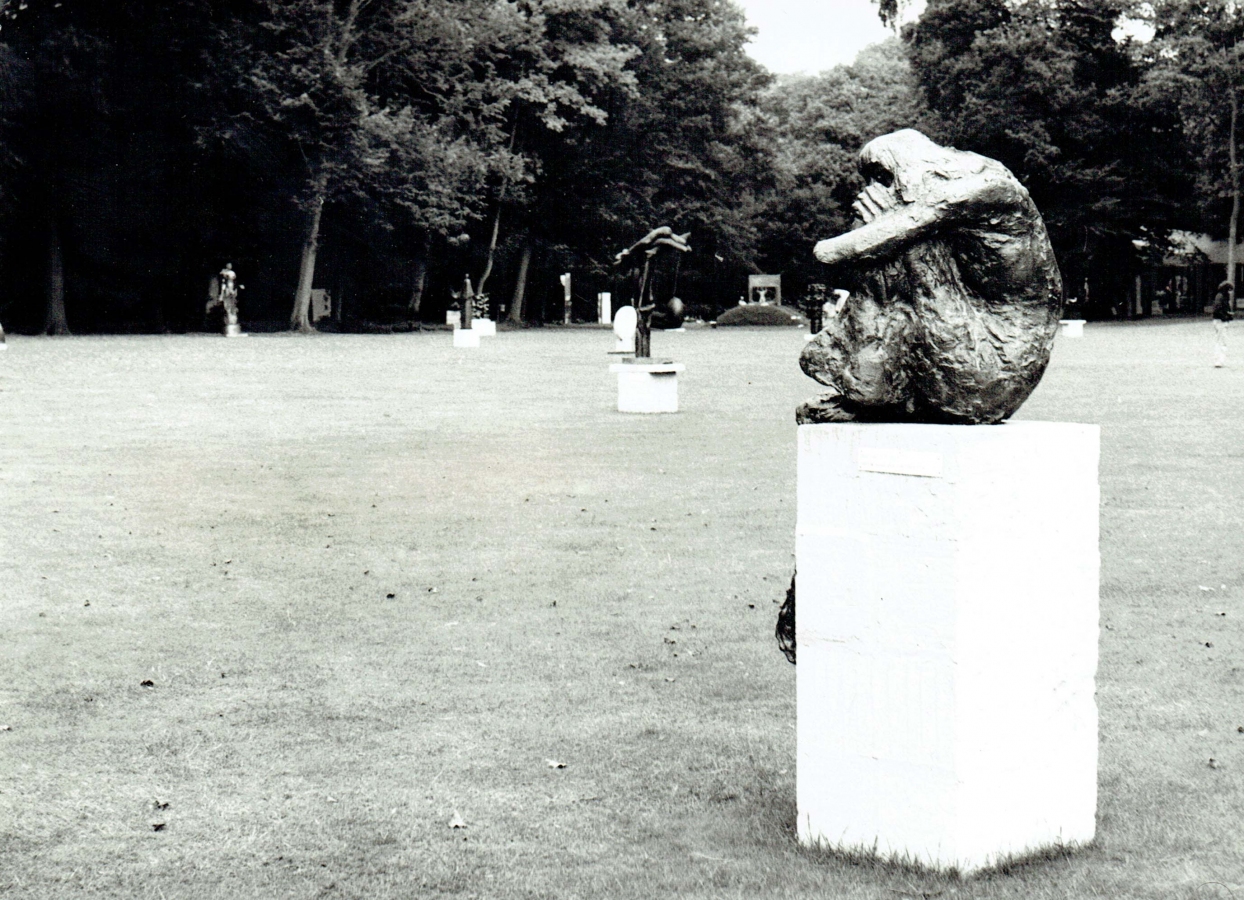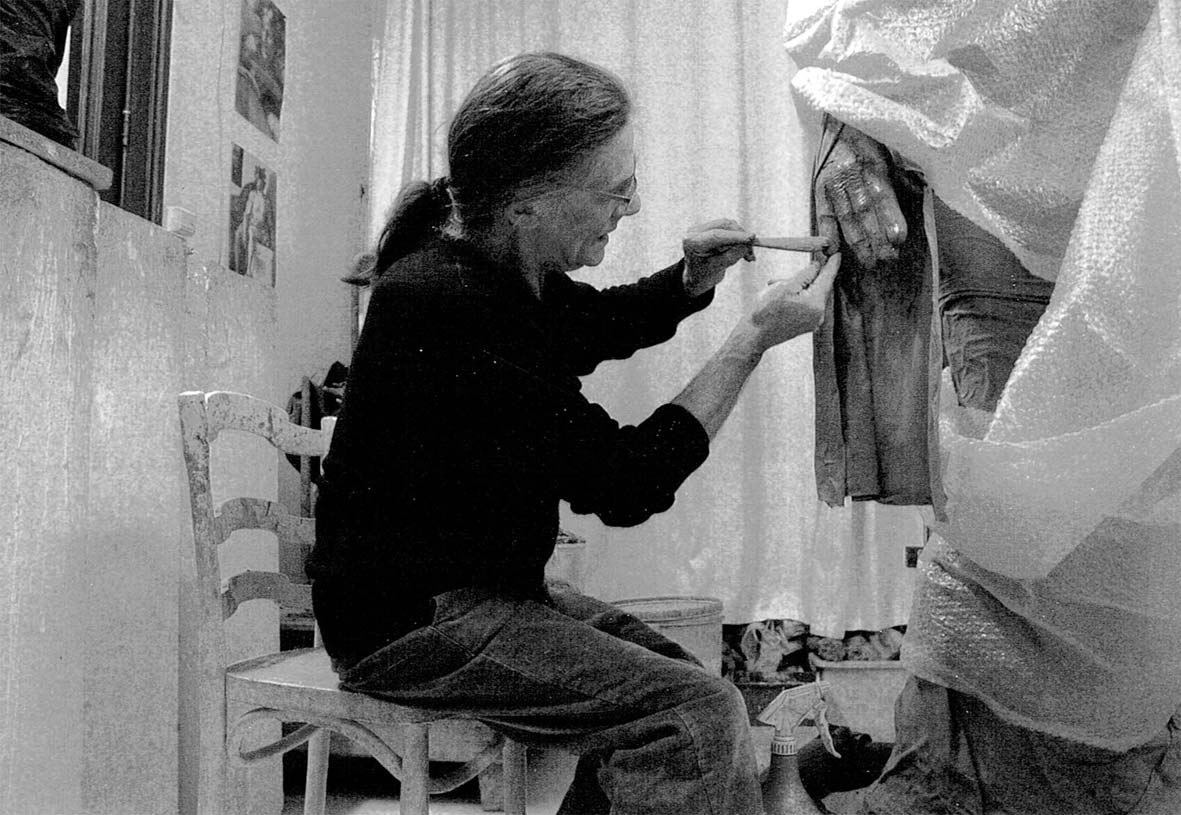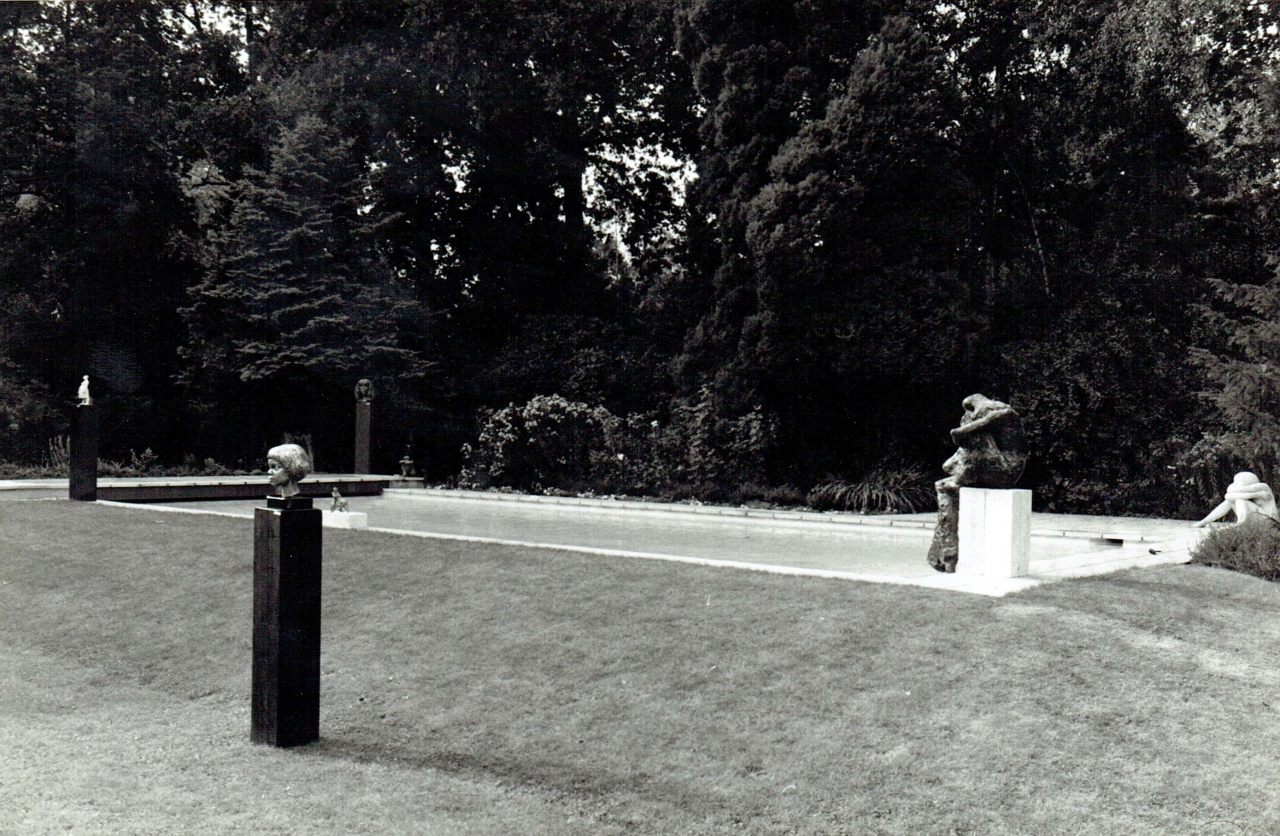 Contemporary artists appear to be able to do everything, to risk everything and to go for it all. And yet, they still always recoil from those qualities that have been the ultimate characteristic of art for thousands of years: craftsmanship and beauty.
Contemporary artists appear to be able to do everything, to risk everything and to go for it all. And yet, they still always recoil from those qualities that have been the ultimate characteristic of art for thousands of years: craftsmanship and beauty.
Craftsmanship and beauty are not qualities that you just suddenly develop. They are the results of a long search, a path that you can only discover through trial and error. Gustaaf Colruyt is his own worst critic. But, he knows, thanks to his craft honed over more than 50 years now, how to create a universality in his best works that surpasses trends, intentions and movements. He utilises a language that is sometimes reminiscent of African or Asian languages, sometimes of expressionist images. It is a language that you cannot easily label or list under a certain style. This is because it is Colruyt’s own, hard won imagery that has arisen from the confrontation with the material. Whether he creates small statues, portraits or monumental statues, Colruyt’s works continue to stand out, not because of their extravagance or popularity, but because of the classical, timeless ambiance that they exude.
sometimes of expressionist images. It is a language that you cannot easily label or list under a certain style. This is because it is Colruyt’s own, hard won imagery that has arisen from the confrontation with the material. Whether he creates small statues, portraits or monumental statues, Colruyt’s works continue to stand out, not because of their extravagance or popularity, but because of the classical, timeless ambiance that they exude.
Gustaaf Colruyt is searching for the right “tone” in his statues. By “tone”, he is meaning something other than “form” or “style”. You can find a “tone” in the most diverse styles and cultures. It doesn’t even have anything to do with the material side of creating a statue. ”Tone” arises once the statue’s material resonates with the universal, and has a universal character. You could call what Colruyt is searching for passion, bringing the material to life, giving it a spiritual dimension and letting this resonate with the spiritual dimensions of the creation.
You could call what Colruyt is searching for passion, bringing the material to life, giving it a spiritual dimension and letting this resonate with the spiritual dimensions of the creation.
However, Gustaaf Colruyt is not a “religious artist” in the literal sense that his father and uncle were. He does not follow any particular religion and has a great understanding and preference for Asian religions, such as Taoism, in which the path that we must tread in life is itself the final spiritual destination. You could say the same of Colruyt’s art: his statues are small steps in the endless search for the right “tone”, for the right passion. They are steps in the long path towards “being”. It is precisely this constant, existential search that makes Gustaaf Colruyt’s sculptures so fascinating.
Marc HOLTHOF